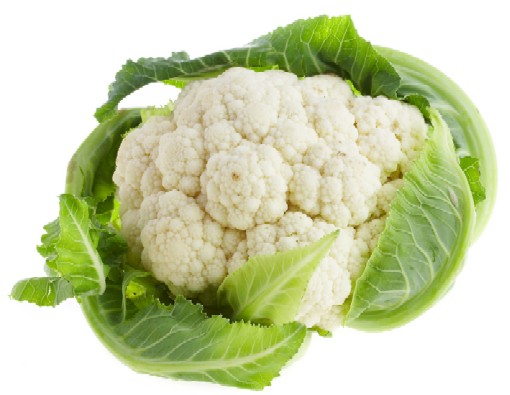 This month's kitchen expert, Yolande Matoré Hoisington, hails from Paris. She aims to bring a little joie de vive back to your family's dinner table. Enjoy!
This month's kitchen expert, Yolande Matoré Hoisington, hails from Paris. She aims to bring a little joie de vive back to your family's dinner table. Enjoy!
The word "cauliflower" means "cabbage flower" -- but don't expect this flower to smell sweet! Cauliflower is actually a member of the cabbage family, which also includes broccoli, Brussels sprouts, kale, and bok choy. Getting your child to eat cauliflower can take effort (and maybe even a little trickery!) but it's worth it: Cauliflower is high in vitamin C, and is a source of potassium and magnesium. It originated more than 2,000 years ago in gardens of Asia Minor and the Mediterranean -- an elegant beginning for today's veggie-platter staple.
Calling all cauliflowers
Cauliflower should have creamy white, compact heads with bright green, fresh, and firmly attached leaves. If it has brown spots, don't buy it! You can store cauliflower in the vegetable drawer of your refrigerator for up to one week.
Sneaky veggies
- Many children don't like the mushy texture of soft-cooked vegetables. Crunchy finger foods like broccoli and cauliflower florets have lots of kid appeal -- especially when served with dip.
- Serve vegetables at the beginning of the meal when children are the hungriest and most likely to eat them.
- Cream of cauliflower soup tastes great for dinner on a cold winter evening.
- Sneak vegetables into favorite foods. Add cooked broccoli to macaroni and cheese, quesadillas or cheese pizza. Mix finely chopped cauliflower and broccoli into a soft cream cheese and spread on a bagel.
- When you go to the grocery store, let your child choose a new vegetable to try every week.
- Set a good example: Be sure to eat your vegetables, too!
Yolande Matoré Hoisington, MA, is a native of Paris, France, an author, and a family kitchen coach. For more recipes from her book -- and tips for parents -- visit harmoniecooking.com.
Recipe
Cauliflower with honey and orange
This delicious and quick recipe combines a vegetable and a fruit. Its slight sweetness makes it particularly appealing to kids. The small amount of honey adds a subtle flavor to the orange and complements its acidity. It's a perfect accompaniment for grilled fish or meat. Leftovers are an excellent appetizer served at room temperature.
4 servings
Preparation time: 15 minutes
1 large head cauliflower, separated into florets
2 oranges
2 teaspoons honey
1/2 teaspoon sea salt
3 tablespoons olive oil
2 shallots, thinly sliced
Parsley, finely chopped
Salt and fresh ground pepper to taste
(optional) 1 orange for garnish
Have your child prepare the ingredients for this recipe by separating the cauliflower into florets.
Bring 2 cups of water to a boil in a large skillet.
Use a paring knife to cut off the rind of one orange in a spiral. Or, just help your child peel the orange. Have your child separate the peeled orange into sections.
Add the florets, orange rind and salt to the boiling water, cover and simmer over medium heat about 6 minutes, until tender but still firm.
Drain the cauliflower, discard the rind and transfer into a bowl.
Return pan to heat and add olive oil. Add shallots and cook for 4 minutes. Add cauliflower and turn to coat.
Have your child squeeze the juice out of the second orange, and mix it with honey in a small bowl.
Add the orange juice to the pan and toss again. Cook for 2 minutes.
Season to taste with salt and fresh ground pepper.
Transfer to a serving dish. Garnish with parsley. Show your child how to surround the dish with orange slices... and make him proud of his work!
Bon appetit!









